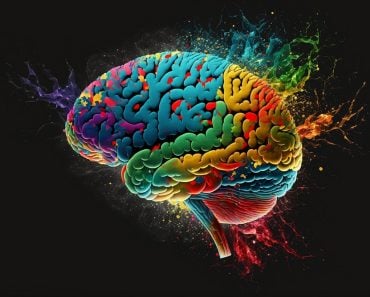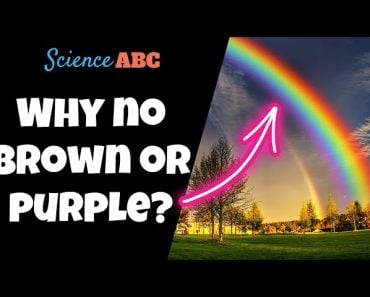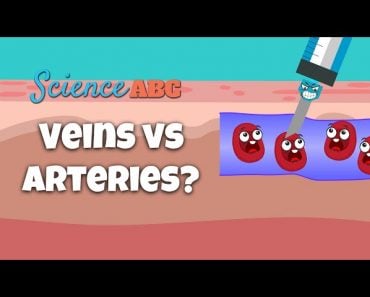Table of Contents (click to expand)
Veins appear blue-green through the skin because of how the skin scatters the light. Red light penetrates deeper into the skin and is absorbed by the vein. The blue and green wavelengths of light are scattered back.
It is a myth that blood is blue in the veins and red in the arteries. In medical diagrams, veins are blue, not because that is the color of human blood, but instead just to differentiate veins from arteries. In the veins, the blood is just a slightly darker red compared to the brighter red blood in the arteries.
But, if blood is red, why do the veins that are visible through the skin appear blue (or purple or green)? Shouldn’t that appear red too?
Recommended Video for you:
The Skin Absorbs Light
The clue is in the question above. The veins only appear blue; that is, they only look blue to our eye because of how the skin and veins absorb, reflect and scatter light.
If you ever get the opportunity to look at a vein or artery on its own, you’ll see that both the blood vessels are white. Even nerves are white. And in fact, most tissues are, unless they have a pigment or something that absorbs a certain wavelength of light and reflects every other wavelength.
White light is made up of different wavelengths of light that line up with the color spectrum of the rainbow. Color of an object depends on which wavelengths the object absorbs and which it reflects.

Skin, and biological tissues in general, are complex. Skin has several layers with different types of tissues and cells. There are skin cells and fat cells and hair follicles and melanin and collagen fibers, of course, blood vessels.
When white light hits skin, the wide spectrum of wavelengths and their colors interact uniquely. Across the spectrum, red light (700 nm) penetrates through the skin the most while blue (450 nm) does so the least. Because blue light penetrates the skin the least, it is also the first to get scattered by the molecular stuff in skin.
In areas where there is a vein, the red light will reach the veins. Veins contain mainly deoxygenated blood, while arteries carry oxygenated blood. Deoxygenated blood absorbs red light (while oxygenated blood reflects red light, which is why blood from the arteries or capillaries will look appear more bright red than the blood in the veins which will look maroon).
When you combine the two events you get blue looking veins. The skin scatters of blue and green light, and because the veins absorb red light, only the blue and green wavelengths reach the eye.
You Can Do This Experiment Yourself.
If you want to see the play of the light yourself, there is a little experiment you can do.
Get a hold or a red light and a blue light. Or find red and blue celophane paper to cover a flashlight with.
Flash the lights on back of your hand or the inside of your arm.
With the red light you should see your veins become more prominent. With the blue light, you should see only blue colored skin, no veins.
Doctors and nightclubs use this to their advantage.
Nurses and doctors can use a vein finder that shines red (700nm) or infrared light (760 to 1 million nm) to detect veins for injections, IV drips, and draw blood.
Caption: A vein finder
Nightclubs toilets do the opposite in that they may use blue light to deter intravenous drug use by making the veins more difficult to locate.
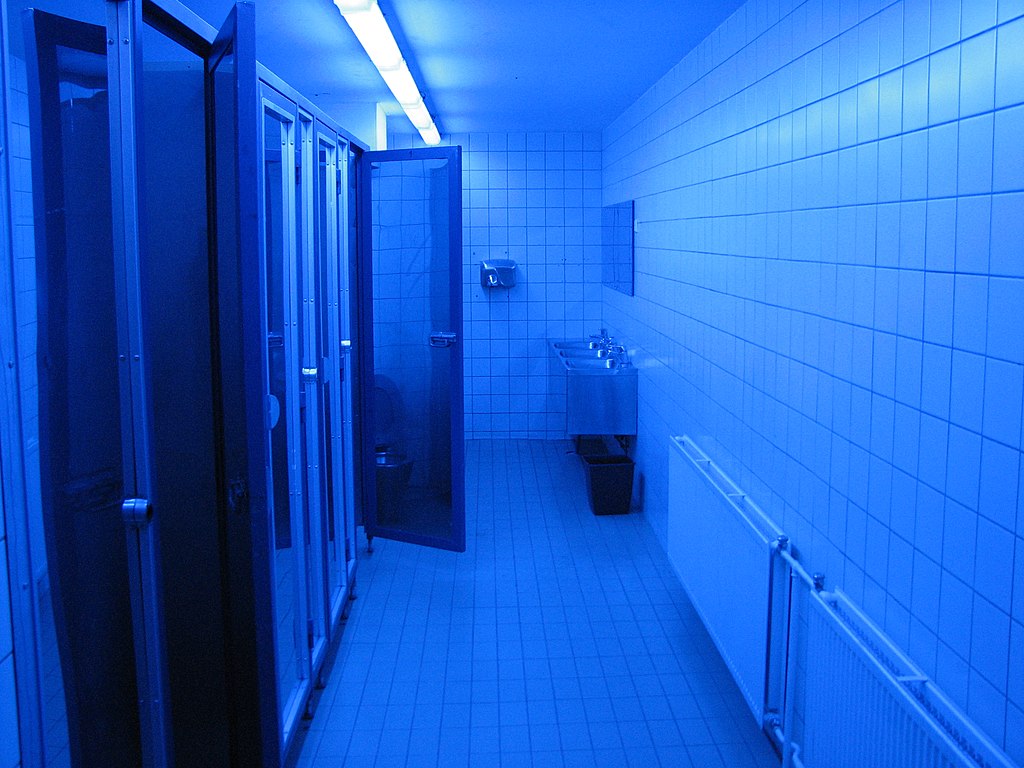
Why Can You Only See Veins And Not Arteries?
Most arteries are located deeper in the body. A few arteries do come close to the surface of the body, such as the radial arteries that pass through the wrist and are used to count pulse. But you still don’t see them.
There are three reasons for this. First, the arteries are still located much deeper than the most superficial veins. Second, arteries have much thicker walls and so the light waves cannot interact with the blood. Third, arteries carry oxygenated blood which does not absorb red light as much as deoxygenated blood does.
Some veins, though, are quite superficially located. All that means is that they’re closer to the skin. These are the ones you can see, and the ones that cause varicose veins. There are two other types of veins that you cannot see: deep veins located, as the name suggests, deep within the body, and pulmonary veins that come out from the lungs.
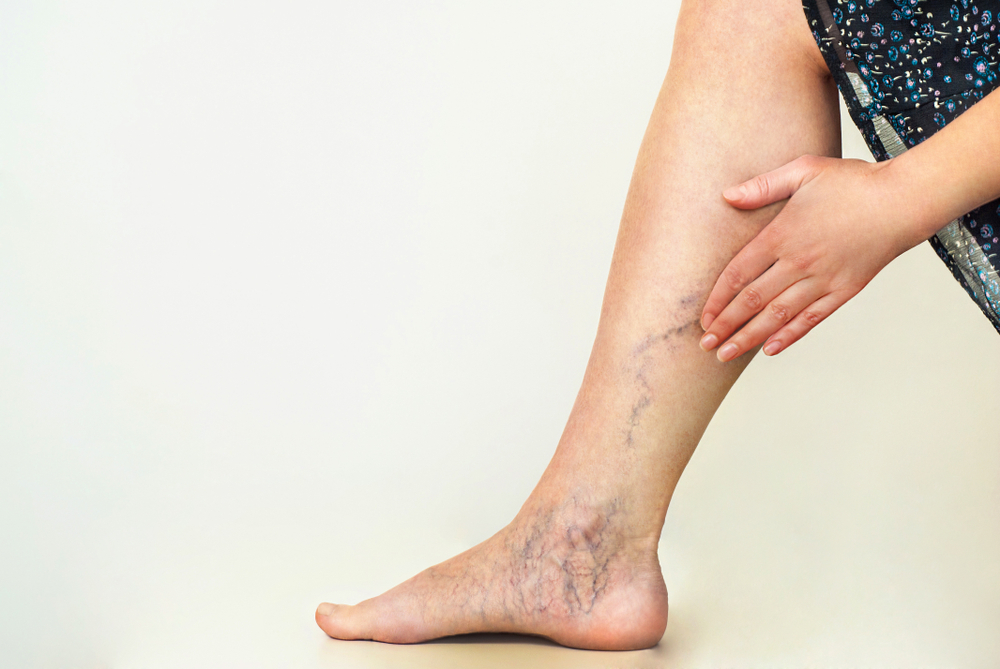
You can see your capillaries and those do no appear green or blue. That is because the capillaries are thin, thinner than hair. They are much closer to the skin than the veins, and appear reddish pink because of the bright red blood flowing through them.
But My Veins Look Green, Not Blue
Ever wondered why royalty is called blue blood? One telling of this phrase is that European royalty were so cloistered in their dark castles that they never had to labor in the sun, which made their veins appear stark blue underneath the fair, translucent, untanned skin.
There is scientific truth in that story. Depending on your skin color, how tanned you are, and whether you have translucent skin, the color your veins appear will be slightly different.
The deeper the vein, the more green it will appear while the more superficial the vein, the more blue, or even purple it will appear because of how the light scatters. We see this with bruises too. A more superficial bruise look purple. A deeper bruise looks green.
References (click to expand)
- Van Leeuwen, S. R. (2018, February 6). Elucidating the contribution of Rayleigh scattering to the bluish appearance of veins. Journal of Biomedical Optics. SPIE-Intl Soc Optical Eng.
- Alwin Kienle, Lothar Lilge, I. Alex Vitkin, Michael S. Patterson, Brian C. Wilson, Raimund Hibst, and Rudolf Steiner, "Why do veins appear blue? A new look at an old question," Appl. Opt. 35, 1151-1160 (1996)



